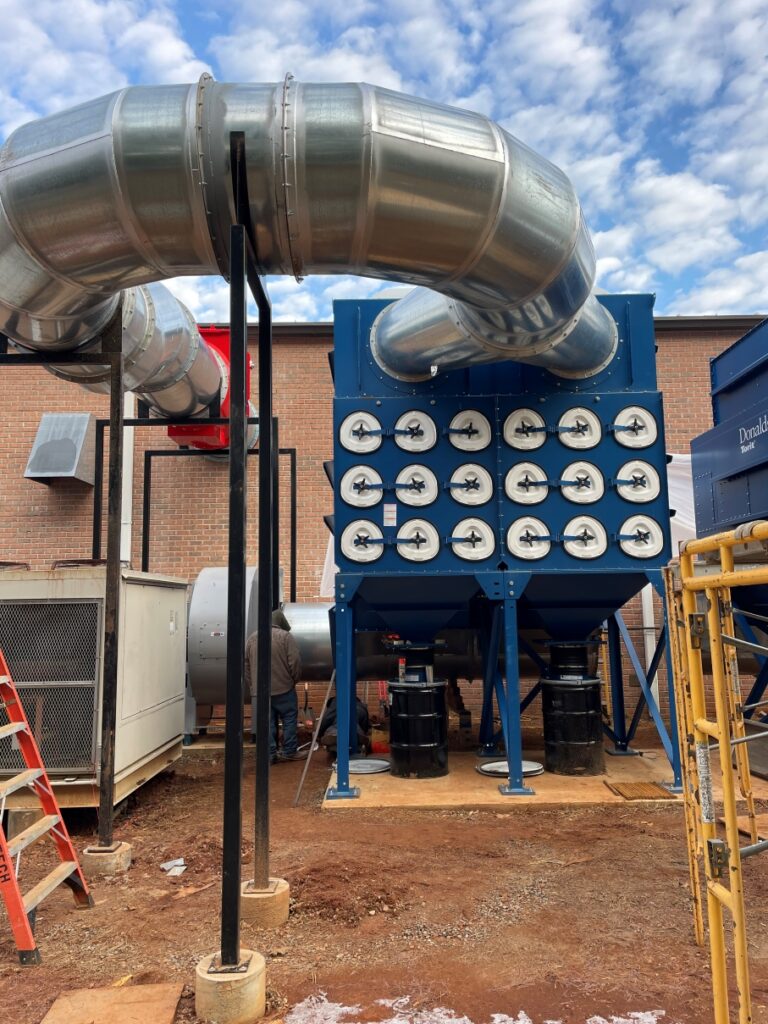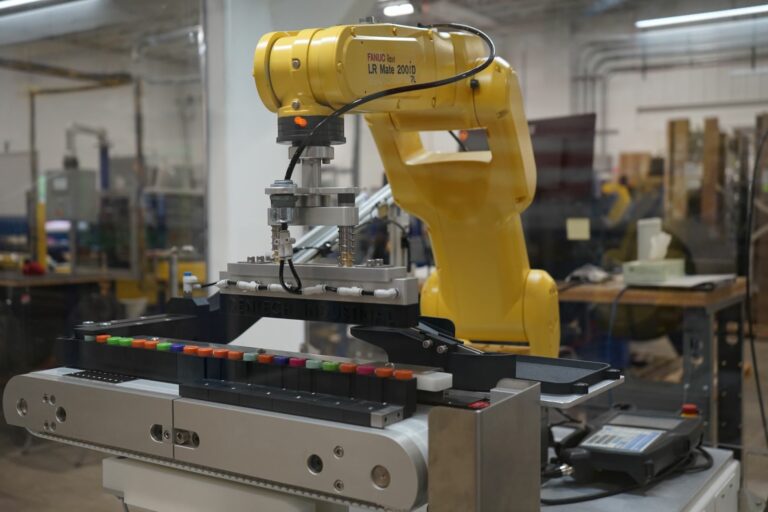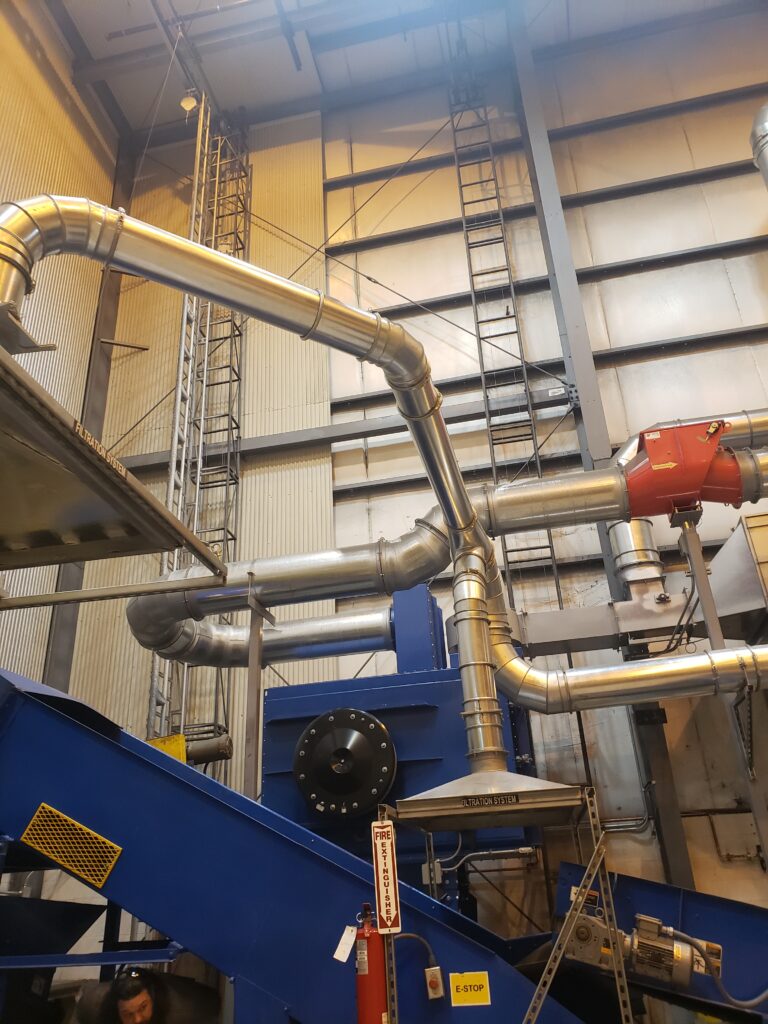Whether your facility has a cartridge or baghouse dust collector, several options for filter media are available. Which filter media is best for your application?
To determine the best filter media, evaluate characteristics of dust and operating conditions in your system.
If you don’t know what the characteristics of your dust are, start with a lab test. Use information from the results to select filter media.
Dust particle size
Dust particle size determines the appropriate filter media by using MERV ratings.
MERV stands for Minimum Efficiency Reporting Value. It is a standard rating system developed by ASHRAE (the American Society of Heating, Refrigerating, and Air-Conditioning Engineers) that assigns a single numerical rating to a filter. The rating identifies the filter’s minimum performance in removing particulate (from 0.3 to 10 microns) from an airstream. Ratings go from 1 to 16, with a higher number indicating a higher filtration efficiency.
The MERV rating tells you what percentage of particles in a specific size range the filter will capture. For example, a filter with a MERV 12 rating will capture 80% to 89% of dust particles that are between 1 and 3 microns in size. So, depending on the size of the dust particles in your application, you can determine which MERV rating is appropriate. That narrows down your filter choices to ones with the MERV rating you need.
For more information on how MERV ratings correspond to particle size and filtration efficiency, see the EPA’s website.
Since MERV ratings apply to filters in a static environment, the MERV system doesn’t account for the cleaning system or dynamic changes in a dust collection system. So, you need to consider additional factors to select the appropriate filter for your dust collection system.
Fibrous dust
Fibrous dust is common in applications including woodworking, grain handling, textiles, and fiberglass. This type of dust presents a challenge because the dust’s fibers easily attach to filter media and settle into filter substrate. Dust buildup restricts airflow and interferes with pulse cleaning.
Donaldson offers filter media designed for fibrous applications. Two examples are Fibra-Web® and Ultra-Tek®.
Statically charged dust
Some types of dust, like in dry food or chemical processing applications, generate static electricity. The presence of static electricity creates a high risk of deflagration. Specific types of filter media can dissipate static charges to safely collect dust.
For example, the Ultra-Web® Conductive FR Cartridge filter includes carbon-impregnated media to dissipate static charges and flame-retardant media that complies with UL® Standard 558.
For baghouse collectors, the Dura-Life™ Anti-Static bag filter dissipates static charge buildup.
Moisture
If moisture is present in the dust particles or airstream, dust can build up on filters and shorten filter life. In this case, select filter media that can stand up to moisture, such as Ultra-Web® SB cartridge filters. These filters have a web of very fine, resilient fiber to catch submicron dust particles on the surface of the filter. This prevents particulates from settling deep into the filter substrate, so filters last longer, clean better, and cost less to operate compared to competitive filters.
Some types of baghouse filters can manage moisture. The operating temperature of the process will determine which baghouse filter is appropriate for your application.
Options from Donaldson include:
- Polypropylene (for applications up to 200°F)
- PTFE Tetratex® (for applications up to 275°F)
- PPS/Ryton® (for applications up to 375°F)
Operating temperature of the system
Applications that operate at high temperatures (generally over 180° F for cartridge dust collectors and over 275° F for baghouse collectors) require filter media that can withstand dry, high temperature conditions. Application examples includes metallurgical and chemical processing. When selecting filter media, be sure to check the maximum temperature the filter can operate in.
Additional considerations
Depending on the dust properties in your application, there may be more factors that determine the filter media you use.
For example, if oil vapors, hydrocarbons, or odors are present, activated carbon filters can remove these. Among baghouse filters, the Dura-Life™ Oleophobic bag filter is designed to release wet, oily, and sticky dust.
Another example is when product contamination is a concern, such as in chemical, food, and industrial processing. In this case, select a filter that’s designed to minimize product contamination, such as Donaldson’s Torit-Tex® cartridge filter.
Many options for filter media are available for cartridge and baghouse dust collectors. The best media for your system will depend on the dust properties and operating conditions in your facility.
Our team at DenTech can help you determine the right filters for your application. We also offer preventative service agreements to keep your dust collection system up and running.




